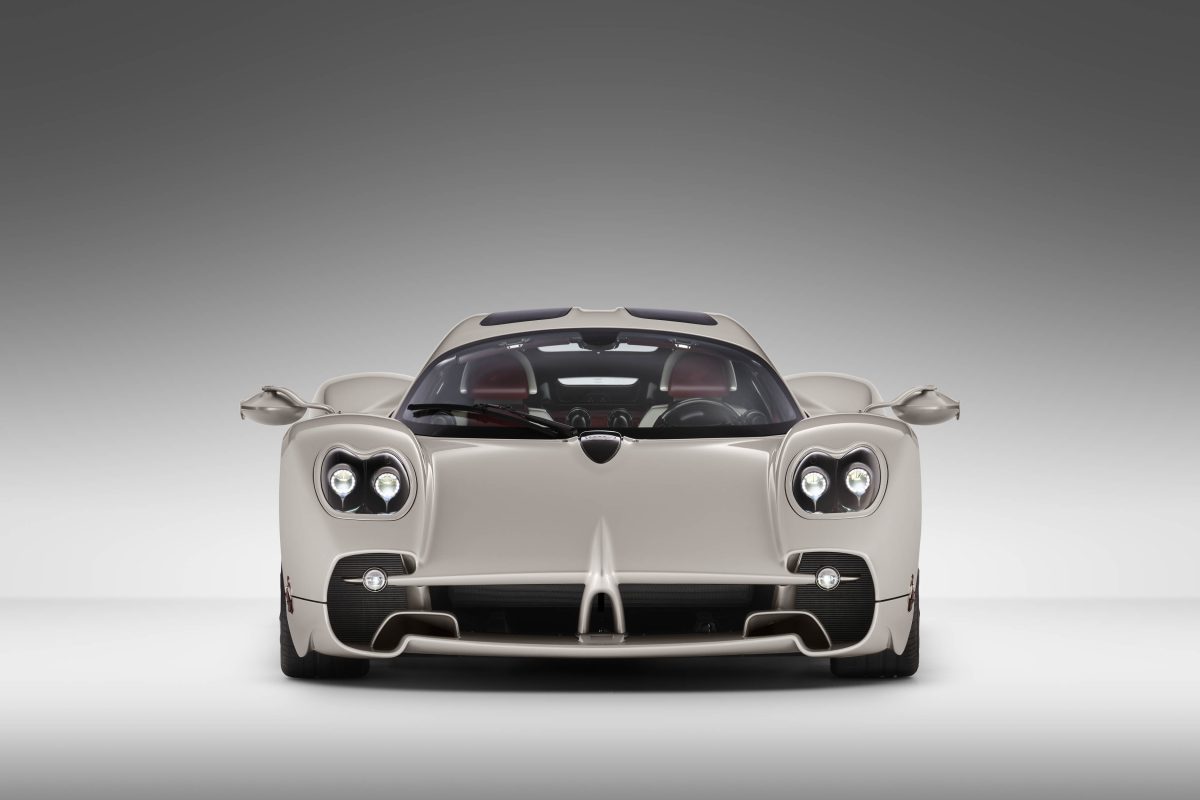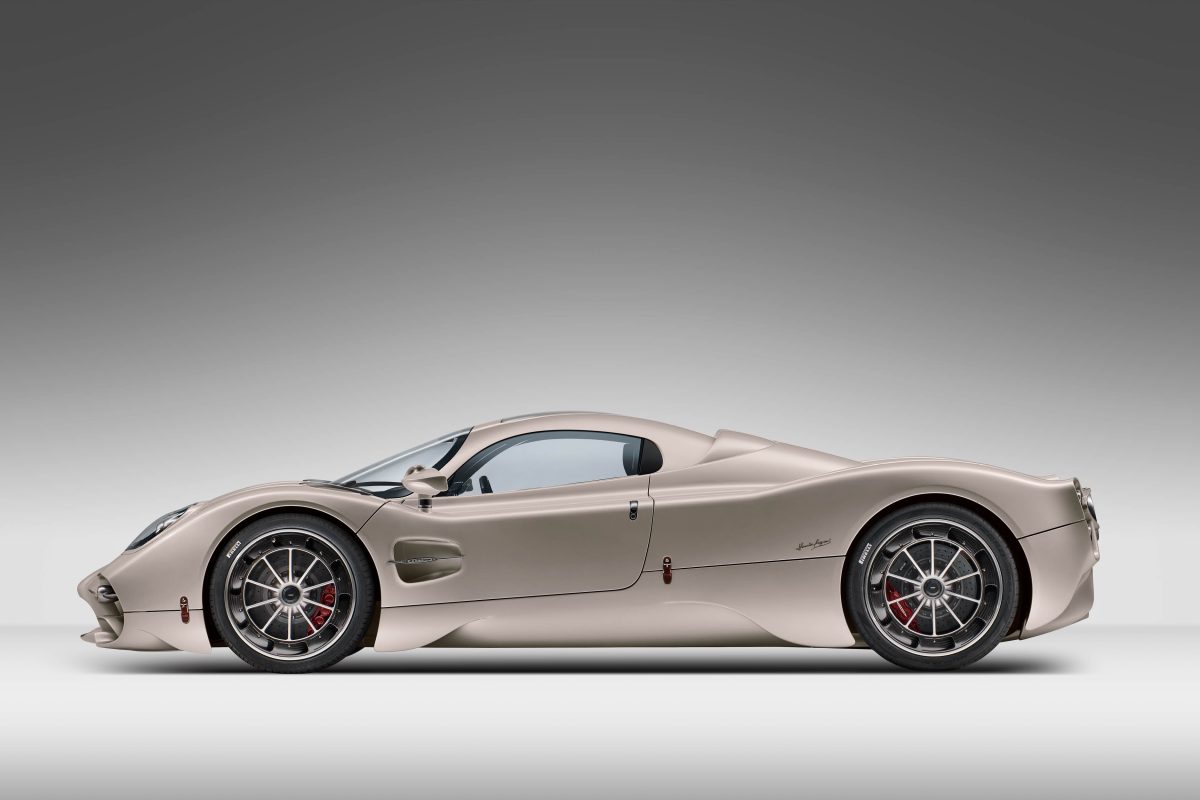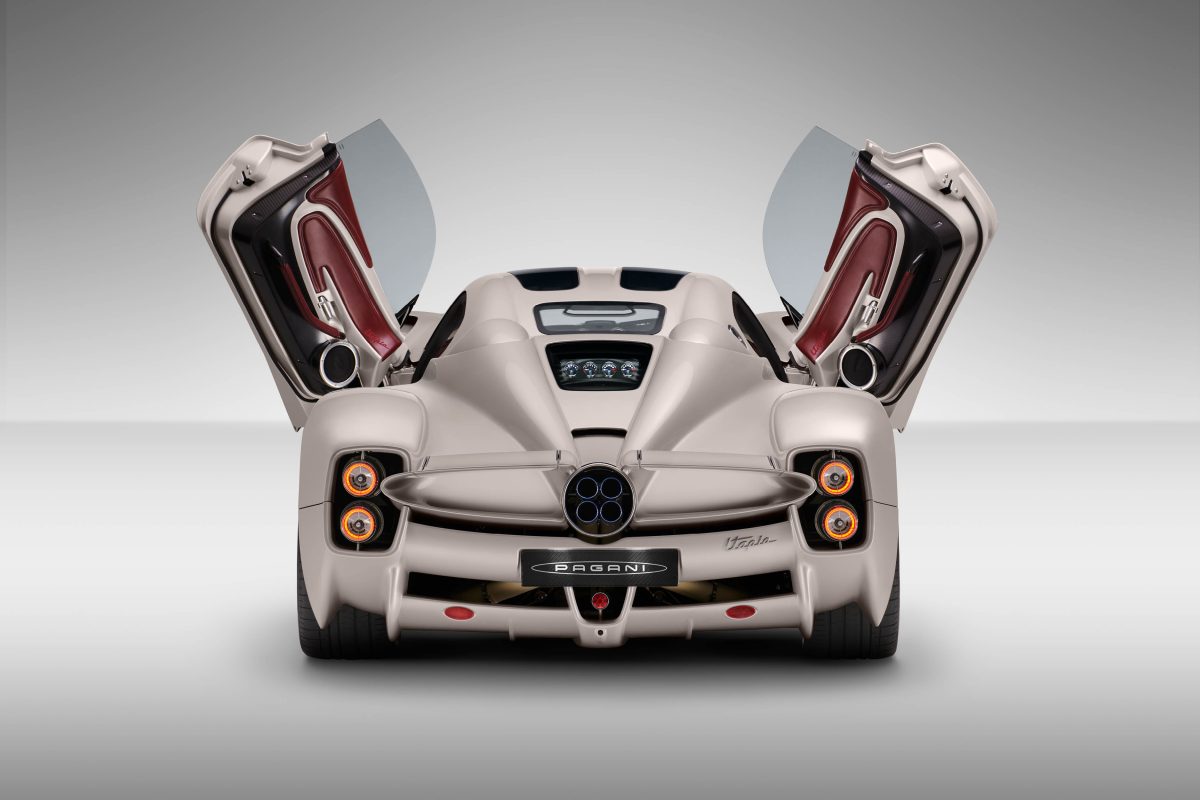The Pagani Utopia is revealed as Pagani’s third model after the Zonda and Huayra
The new car has very few aerodynamic add-ons yet is more efficient than ever. Share
Every Pagani begins with an aesthetic shock but Utopia radiates simplicity. It asserts itself straightaway, affirms and imposes its lines, which are so typical of Pagani but at the same time, it is so different from anything they have offered us before. From the windscreen, with its rounded upper edges, to the details of its wings and bonnet, its softer contours give it a new expression and outline. A shape smoothed and refined over a long time, but sticks in your memory from the first time you see it. The most difficult part of the process for Pagani has been to follow as closely as possible the original intention of creating a timeless design object, instead of one that follows the fashion of the period.
Where some hypercars have a multitude of spoilers, Utopia incorporates the function of these appendices into its overall shape, achieving greater downforce and reduced drag solely by means of its design.

The details of its styling are few in number, but each is so carefully executed that it can be admired in its own right: technologically advanced, their shape is inspired by objects from the 1950s like the streamlined headlamps of Vespa scooters or the fittings of Riva speedboats. The forged wheels have a turbine-shaped carbon fiber extractor which draws hot air away from the brakes and reduces turbulence under the body. Mounted on carbon-ceramic discs, the brake calipers have a new, lightened design.
The role of Pirelli tires is to transfer the exuberant torque to the ground efficiently and bring the finishing touches to the car’s exceptional road feel, thanks to the unusually large 21” wheels in the front and 22” wheels in the rear, which triggered new creativity and distinguishing design freedom on the surrounding bodywork. The silhouette of Utopia can be seen on their sidewalls, demonstrating just how much they have been specially developed for this car.

The side mirrors, as if suspended in mid-air, thanks to the airfoil-shaped support are set apart from the body for better aerodynamic penetration, showing the meticulous optimization that was carried out on them in the wind tunnel. The rear lights float at the sides of the rear wings, set into the air extractors. Each part of them, so beautifully crafted, could be displayed in the window of a jeweler’s shop.The titanium quad exhaust, a personal monument and signature of the brand, is still present.
It has a coating, in order to dissipate the heat efficiently, but still sets the weight just above 6 kilograms for the complete system. A car may be compared to a sculpture, but opening the door changes everything; a sculpture, yes, but one you can sit in. The interior of Utopia is even more original, if that is possible, than its exterior shape.

Neither modern nor retro, it is timeless. There are no screens apart from the minimal display in front of the driver; big screens would have been easier to fit and would have saved a lot of effort in the design, but it would have taken away much of the beauty. All the instruments are purely analog and each of the easy-to-read dials subtly reveals part of its mechanism as if it were revealing the skeleton movement.
For Pagani, every component needed for the car to function is an opportunity to be creative. Even the steering wheel has been reinvented: it is fashioned from a solid aluminum block, from the spokes and hollow rim to the steering column boss, which contains the airbag. The pedals are also made from a single block of metal, while the gear lever mechanism is still exposed but more sophisticated than ever. All this with proper obsession paid to ergonomics, efficiency and ease of access.

To reach this very simple final shape, the process has never been as complex. For six years, from the first sketches and computer calculations until the definitive shape was frozen for the carbon fiber molds, its internal airflows were perfected through endless hours of research in the wind tunnel and countless changes, one touch at a time. Utopia takes advantage of the mysteries of aerodynamics to maximize sure-footed handling and stability at any speed, however high. Its active aerodynamics, combined with the electronically controlled shock absorbers, ensure the optimum dynamic behavior in all driving conditions. The double-wishbone suspension, made from aerospace aluminum alloy, benefits from the lengthy development work carried out on the R, the track-only version of the Huayra. But Utopia, a car designed for road use, can cope with surfaces for daily use.
The carbon monocoque used on previous Pagani models sets the standard in terms of its strength, lightness and build quality. Pagani has chosen to consolidate its existing strengths, to improve how its fibers are woven and to constantly invent new composite materials such as Carbo-Titanium and Carbo-Triax. On top of that, a new type of A-class carbon fiber has been developed specifically for aesthetic applications such as the bodywork, providing 38% of additional stiffness with the same density.

The Pagani V12 engine, a 6-liter biturbo specially built by Mercedes-AMG for Pagani, is the result of an enormous development work: it delivers 864 bhp and, above all, a prodigious 1100 Nm of torque. It revs higher and is both more flexible and more powerful while meeting the most stringent emissions regulations, including those in force in California.
As we discover his latest work, it is the path taken by its creator that fascinates us. Horacio Pagani builds the cars he has dreamt of. And it is to fulfill his highest aspirations, those closest to the impossible, that, as a very conscientious engineer, he seeks to serve the dreamer. In the land of dreams, you need a guide: the great Leonardo da Vinci has always been a crucial figure for Pagani. It is under Leonardo’s aegis that he has always believed that it is possible to combine art and technology.



